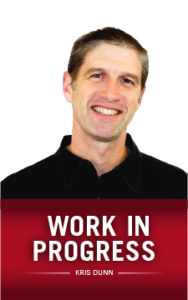Employee assistance programs have been proven to deliver real business benefits. When companies provide resources for employees to help them deal with stress, substance abuse, family conflict and other personal issues, it improves their workplace performance and productivity. One 2008 study showed EAPs delivered a $6.47 return on investment for every $1 spent.
Despite this clear value proposition, companies rarely take full advantage of these offerings, and in many cases, employees don’t even know they exist. According to Chestnut Global Partners’ 2016 EAP trends report, utilization rates in North America were less than 7 percent.
“EAP offerings have historically been underutilized for a lot of reasons,” said LuAnn Heinen, lead expert on EAPs for the National Business Group on Health, a Washington, D.C.-based nonprofit organization focused on national health policy issues. Managers rarely refer employees to the appropriate programs, and even if employees are aware of the offerings, there is often a stigma attached to using them. “There are a lot of missed opportunities with EAPs,” she said.
Low utilization rates continue despite the fact that EAP offerings have matured over the years, from simple support for substance abuse, to robust portfolios of mental health offerings designed to help employees deal with depression, reduce stress and address anxiety at work and at home.
Stress Is Good for Business
Among those who are using EAP services, the CGP report showed an increase in the number of crisis counseling sessions, which they attribute to ongoing organizational changes, economic stress and a general trend by employers to move toward high deductible medical plans, which can have an unintended cost of driving more employees with high-risk conditions to the EAP.
 “The rise in stress and anxiety among employees is something companies need to pay attention to,” said Todd Donaldson, director of training and consultation services for CGP. “Offering employees access to these kinds of services is important to maintaining a healthy and productive workforce.”
“The rise in stress and anxiety among employees is something companies need to pay attention to,” said Todd Donaldson, director of training and consultation services for CGP. “Offering employees access to these kinds of services is important to maintaining a healthy and productive workforce.”
NBGH has seen companies seeking mental health and emotional well-being services as part of their EAP offering in recent years. Heinen noted that some of the largest companies are bringing in their own in-house clinicians, and providing 24/7 online access to psychological health professionals to support the mental health of their employees. “There is a lot of interest in these types of programs.”
EAPs are also more directly linked to traditional health care plans now than in the past, said Lucy Henry, vice president of stakeholder relations for First Sun EAP in Columbia, South Carolina. “Many larger EAPs are now embedded with health insurance, along with long term disability, life insurance and other ancillary plans,” she said.
In some cases, health insurance companies may include free EAP programs, including a limited number of counseling sessions and crisis management tools as a value added program.
At the same time, employees are finding support on their own, particularly via mental health apps like Spire, Happify and Whil. Roughly a third of all consumers have at least one mobile health application on their mobile device, and this number is expected to keep growing, according to the CGP report. However, there are no studies showing whether these apps have an impact on behavior or performance. “Apps are a nice add-on, but they don’t begin to address what EAPs can do,” Heinen said.
Benchmarking and ROI
Demonstrating positive outcomes of EAP offerings is something providers are paying closer attention to in order to reinforce the value proposition of these services, Donaldson said. To tackle this challenge, benefits leaders and EAP providers need to do a better job communicating the availability and value of EAP services to employees, and overcoming stigmas related to employees’ seeking help for mental health disorders. They also need to provide training and career coaching for managers about when and how to refer employees to these services.
EAP providers can further overcome this challenge by doing more benchmarking and showing the impact of their services. “Frequency of use isn’t a measure of quality,” Donaldson said. If vendors can link the impact of their services to productivity and reduced absence it can help them demonstrate the financial benefits of investing in these services. That includes tracking the outcomes of phone counseling services and employer sponsored mHealth apps.
“You have to determine whether the tools actually lead to behavior change or improved health,” he said.
He also encourages companies to align EAP services with organizational goals, and for company leaders to openly support use of these programs. “It’s not enough to offer the benefit. Employees need to see buy-in from local stakeholders for it to become part of the cultural norm.”
Sarah Fister Gale is a writer based in the Chicago area. Comment below or email editors@workforce.com. Follow Workforce on Twitter at @workforcenews.





 Remember when all you needed to recruit effectively was a basic careers site that had a link to your applicant tracking system and a PDF of the overly aspirational company values designed by your founder that everyone you worked with loved to snicker at?
Remember when all you needed to recruit effectively was a basic careers site that had a link to your applicant tracking system and a PDF of the overly aspirational company values designed by your founder that everyone you worked with loved to snicker at?



 Treating people well creates a positive culture, she added. “The people and the rituals make the culture, not the fun things we do or the keg in the office. A lot of companies have that misconception. But your people are your culture. How you treat your people is your culture.”
Treating people well creates a positive culture, she added. “The people and the rituals make the culture, not the fun things we do or the keg in the office. A lot of companies have that misconception. But your people are your culture. How you treat your people is your culture.”

 I like to tell myself that I’m still a young man, and in many ways, I still am. I’m active, mentally sharp (just ask me) and some would say at the apex of my career.
I like to tell myself that I’m still a young man, and in many ways, I still am. I’m active, mentally sharp (just ask me) and some would say at the apex of my career.


 Workplace wellness initiatives continue making headway into employee perks with one important goal: influencing behavior change and improving employee health.
Workplace wellness initiatives continue making headway into employee perks with one important goal: influencing behavior change and improving employee health.


 When you consider that most of us spend about one-third of our adult lives at work, it makes sense that the workplace can be the epicenter of healthy habits — for body, mind and wallet.
When you consider that most of us spend about one-third of our adult lives at work, it makes sense that the workplace can be the epicenter of healthy habits — for body, mind and wallet.

